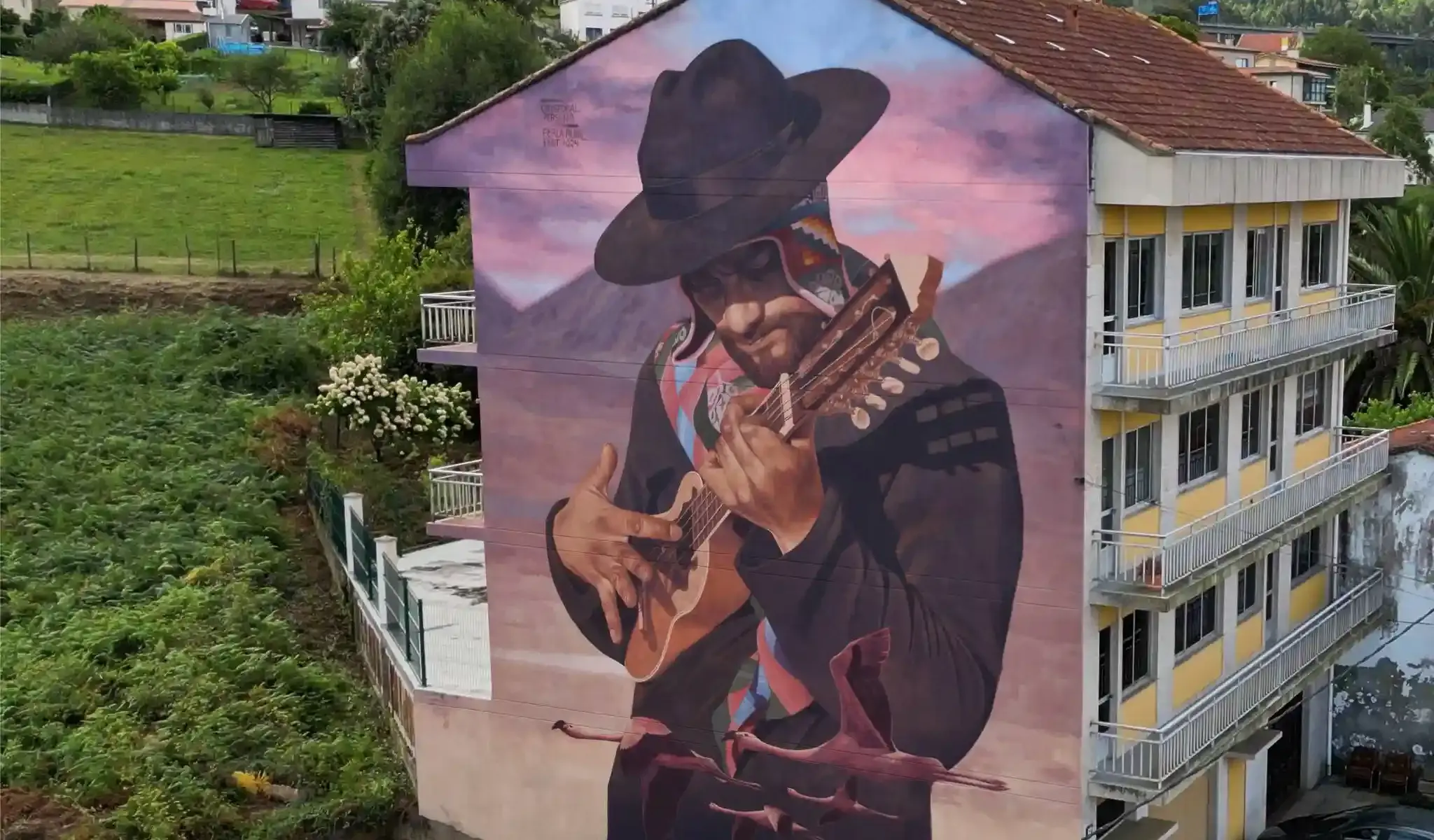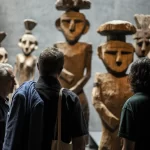
A native of Maipú, Cristóbal Espinosa (34), better known in the art world as Cristóbal Persona, has established himself as one of the leading figures of muralism worldwide. His work "El Charanguista Andino" was recognized with the first place in the category Best Mural of the World 2025, in the contest organized by the collective Street Art Cities.
The challenge of painting a 17-meter mural in Spain
The mural, 17 meters high, was created as part of the Perla Mural Fest 2024, in Fene, Spain. Its elaboration represented a real challenge: nine days of uninterrupted work, with working days of up to 12 hours and changing weather conditions of rain, heat and intermittent sunshine.
About the award, he admits that "I was a little uncomfortable with the title 'Best mural in the world' because there were several better works, but it helped me personally to generate greater national and international visibility". He emphasizes that this type of contest seeks to promote urban art in the media, generating new opportunities for artists and communities.
What led you to dabble in muralism and how were your first steps in this art?
I started 2017 on a backpacking trip through South America, I was presented with the opportunity to paint murals in hostels during the trip to cut costs and I found that activity a very satisfying experience. When I returned to Chile I progressively made the transition between office work and painting. I worked as an assistant to muralists like Palta, Stfi, Juana Perez. In 2018 I painted my first wall in the street to make visible the back murder of Camilo Catrillanca by carabineros.
What message did you want to convey in "El Charanguista Andino"?
The Perla Mural Fest festival where I painted it, has music as its theme, because it was born as a commemorative event to a concert hall demolished by the municipality of Fene, Spain, some years ago. I thought of Andean music because I have painted in Calama on several occasions. I have also been able to travel through Peru, Bolivia and Ecuador.
The charango is a representative element of mestizaje since it was developed around 1500 using a Spanish instrument called Vihuela as a reference. The person who modeled for the design is a friend who plays the charango in the Kollasuyu group of Andean music. I also wanted to represent the people who strive to progress and dedicate the little free time they have to an activity that they are passionate about and that is not their job.
The impact of muralism on Chilean cultural identity
How do you think your work reflects Chilean identity and culture ? What themes inspire you most when creating murals?
I think it reflects more a way of symbolically representing stories and histories with meaning for the communities where it is painted. I try to use Latin American literature as a reference and native birds as recurring elements. I am exploring new themes, I have more transversal interests. When I interact spontaneously with people who come to me, I try that the conversation leads to overthrow prejudices and misconceptions that are taken for granted as a result of misinformation.
Chile has important references in the history of muralism, such as the Ramona Parra Brigade. How have Chilean references influenced your work?
I think that the main influence has been the purpose for which I paint. I try to communicate ideas in the murals, to generate a space for a pause in the daily life of the people who pass through the places, so that they can find things in the mural that they would not find in their daily life; sometimes transversal themes to the human condition of the individual in society and other social themes made invisible and/or distorted by the mass media.






